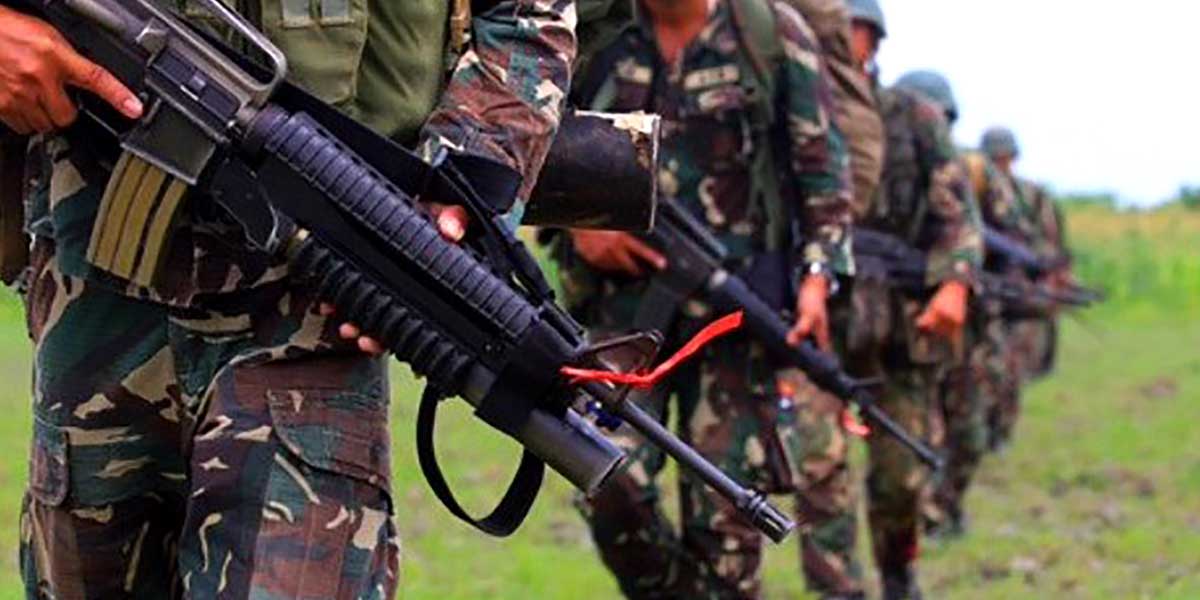
By Jennifer P. Rendon and Emme Rose Santiagudo
Amid the 2019 novel coronavirus (nCoV) threat, different agencies agreed to install infrared thermal imaging cameras in different airports and seaports in Western Visayas.
This decision was adopted during the joint meeting of the Regional Development Council (RDC)-6 and the Regional Peace and Order Council (RPOC)-6 on Feb. 6, 2020, in Iloilo City.
The use of thermal scanners is seen as a non-invasive, speedy, cost-effective, and fairly accurate means for a mass blind screening of persons with potential nCoV infection.
Dr. Marlyn Convocar, Department of Health-Center for Health Development (DOH-CHD)-6 director, said the council has to come up with implementing rules and guidelines relative to the RDC-6 and RPOC-6 resolution, especially on the placement of thermal scanners.
Convocar said the DOH and other concerned agencies need to sit down with Civil Aviation Authority of the Philippines (CAAP) and the Philippine Ports Authority (PPA) to plan out the implementation like “who will buy the scanner, what kind of scanners, where will these be placed and its capacity.”
National Economic and Development Authority (NEDA)-6 Regional Director Ro-Ann Bacal said the thermal scanners will be the first line of defense of the region from the potential carriers of the novel coronavirus.
“It will be our first line of defense. It is better than nothing. We need to do that so that we can eliminate the risk even before they enter the region,” she said.
A thermal scanner costs about P5,000 while an automatic scanning system is at P1.5 million.
HOW EFFECTIVE?
But how effective are scanners in detecting nCoV infection?
Convocar explained that nCoV has a 14-day incubation period. When a passenger passes through a thermal scanner and no fever is detected, “it’s not 100 percent that you are free because fever could appear on the last day of the 14-day incubation period.”
“When you are febrile and you passed by the airports, it is not 100 percent sure that you are negative because the incubation period is about 14 days. You can be febrile on the 13th day,” she explained.
This is where the Barangay Health Emergency Response Teams (BHERTs) will come in and help in tracking down possible persons under monitoring (PUMs) and persons under investigation.
“They will monitor all those arriving passengers in their barangay and they will monitor them daily. Based on our suggestion, they will have to be monitored twice a day for their temperature for the next 14 days based on their time of departure from China, Macau, and Hong Kong,” she said.
Based on Memorandum Circular No. 2020-018 of the Department of Interior and Local Government (DILG), BHERT should conduct visits in the home of every arriving person from a coronavirus affected country; check and record the temperature daily in the 14-day confinement period; if symptoms are observed immediately isolate and confine the arriving resident and transport to a DOH-designated coronavirus-referral center.
Convocar said scanning is just one way to track a possible nCoV patient.
She said it will also help if travelers are requested to proceed to DOH facilities for consultation if they suffer from fever, cough, and/or colds.
“We could also track them once our barangay health and emergency response team in every locality becomes functional,” she said.
All processes will be used to detect nCoV infection, and the thermal scanner is just one of them.
DECISION TOOL
Meanwhile, the DOH said a person will be determined as a “person under investigation” (PUI) or “person under monitoring” (PUM) based on their decision tool for nCoV assessment.
The decision tool includes fever at 38°C and higher; respiratory infection (cough and/or colds); travel history for the past 14 days in China, Hong Kong, and Macau; and history of exposure (if you come in contact with someone positive for nCoV).
“Kun naghilanat ka man kag wala ka naka-travel, wala ka naga-fit sa decision tool. You could be suffering from other illnesses,” Convocar said.
A person could also be classed as PUM if he or she came from a country with a positive nCoV case and suffers from fever, cough, or colds.
There were earlier reports that AirAsia will bar a passenger from boarding the plane once his or her body temperature hits 37.5°C.
But Convocar said there’s a need for them to sit with the airline companies to harmonize their guidelines.
“We should also come up with a decision where should the temperature be taken – at the departure or arrival,” she said.
Convocar said it will take a collegial effort to harmonize the guidelines with airline companies.
But as of now, “we would stick to the latest decision tool of 38 °C,” she said.
HEALTH ID CARD
Aside from thermal scanners at airports and seaports, Convocar also pushed for Health Identification Cards as “it could help us track and contact trace sa patient in case someone will turn out positive.”
“We want to prevent what happened in other regions that they had a hard time tracing the persons with contact to the positive cases. The health declaration card could help us in tracking them,” she said.
The provinces of Iloilo province and Capiz already proposed the ID for passengers in their areas but they have different formats.
“The form should be uniform to be used by everybody. But we could not impose that everybody will use it unless recommended or sanctioned by RDC,” Convocar said.
The health identification card will contain data like residence, among others.
The data in the health cards are more detailed than the airline manifesto declaration which only indicates the airplane, flight number, and seat number.
ISOLATION AREA
As of Feb. 6, Western Visayas has 14 PUIs and no positive nCoV case. Eight were already discharged while six are still admitted to hospitals.
There were also proposals during the meeting to designate isolation areas if there will be a surge in cases.
“We always prepare for the worst. If the PUIs would surge, Western Visayas Medical Center might not be able to accommodate them,” Convocar said.
It is also important to segregate patients based on clinical syndromes associated with nCoV – uncomplicated illness, mild pneumonia, and severe pneumonia.
Those with uncomplicated illnesses are patients with uncomplicated upper respiratory tract viral infection, may have non-specific symptoms such as fever, cough, sore throat, nasal congestion, malaise, headache, and muscle pain.
The elderly and immunosuppressed patients may present atypical symptoms. These patients do not have signs of dehydration, sepsis or shortness of breath.
An immunosuppressed patient or immunocompromised host is a patient who cannot respond normally to an infection due to an impaired or weakened immune system. This inability to fight infection can be caused by several conditions including illness and disease (eg, diabetes, HIV), malnutrition, and drugs.
Patients are classified as mild if they have pneumonia but no signs of severe pneumonia.
A child with non-severe pneumonia has a cough or difficulty in breathing.
Meanwhile, an adolescent or adult with severe pneumonia could be suffering from fever or suspected respiratory infection, plus one of respiratory rate or more than 30 breaths per minute, severe respiratory distress, or blood oxygen saturation of less than 90% in room air.
A child with severe pneumonia could be exhibiting cough or difficulty in breathing, plus at least one of the following: central cyanosis or SpO2 less than 90%; severe respiratory distress (e.g. grunting, very severe chest indrawing); signs of pneumonia with a general danger sign; inability to breastfeed or drink, lethargy or unconsciousness, or convulsions.
Convocar said those who exhibit mild symptoms will be placed in isolation at hospitals designated by the province while severe PUIs will be addressed by WVMC.
So far, all 14 PUIs have mild pneumonia and DOH did not see the need to bring them to tertiary care for management.
Personnel or medical technologists of that facility will be trained in extracting specimens or swabbing.
The DOH will then transport the specimen to the Research Institute for Tropical Medicine in Manila.
Drivers of ambulances will also be updated on their safety when transporting patients to the hospital.
They would also be trained on how to decontaminate ambulances.




















